Last weekend I carried on a tradition for the third year running. My cousin Molly joined me to peel, cut, cook and can this liquid gold that we call homemade ketchup.
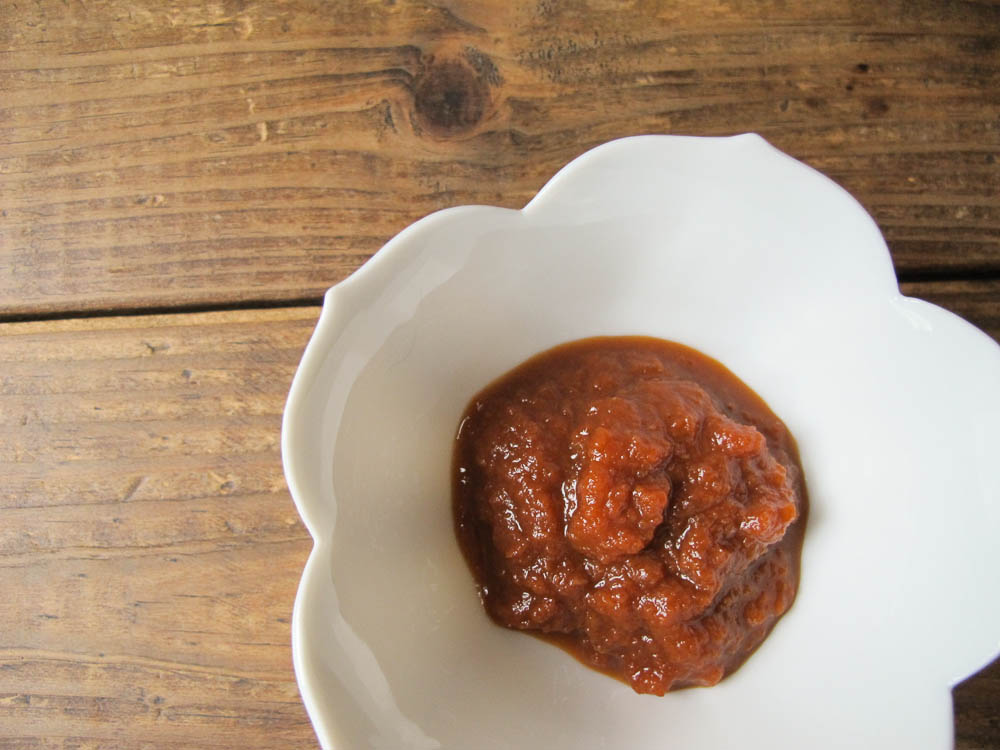
Molly and I, and many who we’ve shared with, concur that store-bought ketchup doesn’t hold a candle to this homemade version. Whole food ingredients, with just the right amount of sweetness and vinegar and spices. When Molly came over last summer to help me can it for her first time, I told her she would think I was crazy for making her do this, then she’d taste it the next week and want to do it again. (I was right that she thought I was crazy. But she came back this year, didn’t she?)
It started with buying tomatoes en masse (56 pounds, to be precise). We both ran out of the ketchup we made last year, so we set an aggressive goal to double the quantity this year, to 8 batches. (Ridiculous, right? IT’S SO GOOD.)
I’m not sharing my recipe for this today, but it came out of Canning for a New Generation by Lianna Krissoff. I can’t recommend this cookbook highly enough, and the ketchup recipe alone is worth the cost of buying the book.
The book recommends making the ketchup with the tomato skins and seeds intact, then straining them out later in the process using a Squeezo strainer or food mill. I don’t have a Squeezo, but Molly and I have tried a food mill and it took a long time. We ended up using a wire mesh strainer and a pestle to strain the flesh of the tomatoes through while leaving the seeds and skins behind. To make a long story short, it was laborious. We decided to try something new this year.
So we spent a couple hours blanching, peeling and seeding the tomatoes ahead of time. (Still took a while…but it was much easier than the alternative. Totally worth it. Plus, as you’ll see below, we ended up with a higher yield than we expected. This may partially explain why.)
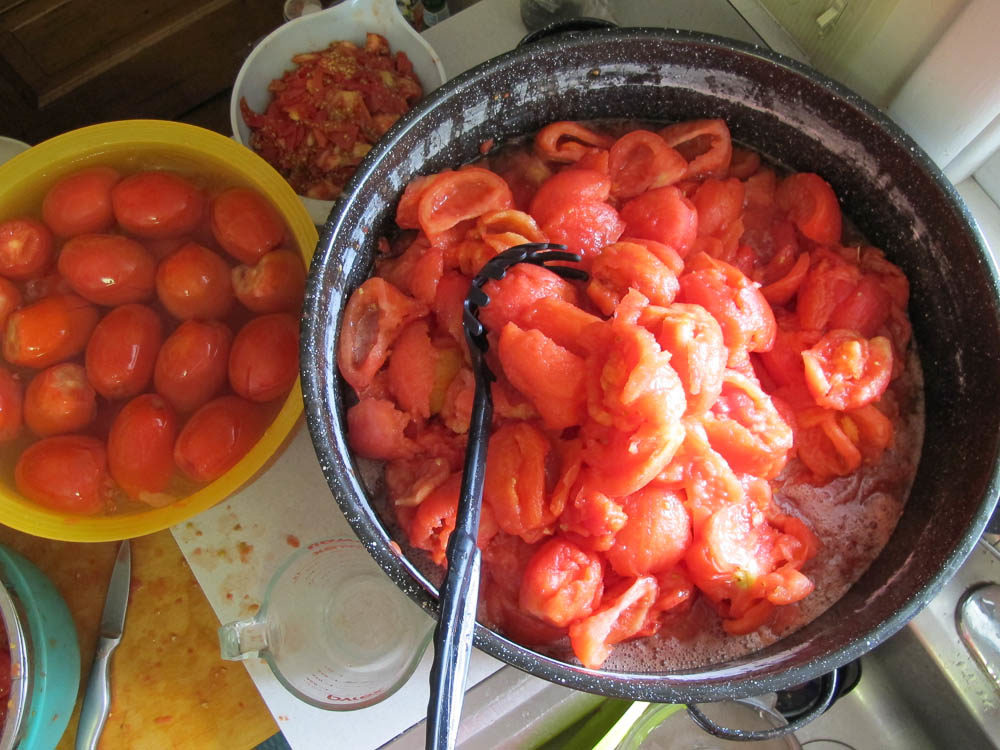
Then we mixed them with onions and garlic (use a food processor to save time + tears!), cider vinegar, brown sugar, salt, paprika, cinnamon, cloves, allspice and cayenne. We also made a couple batches with curry powder, to make curry ketchup.
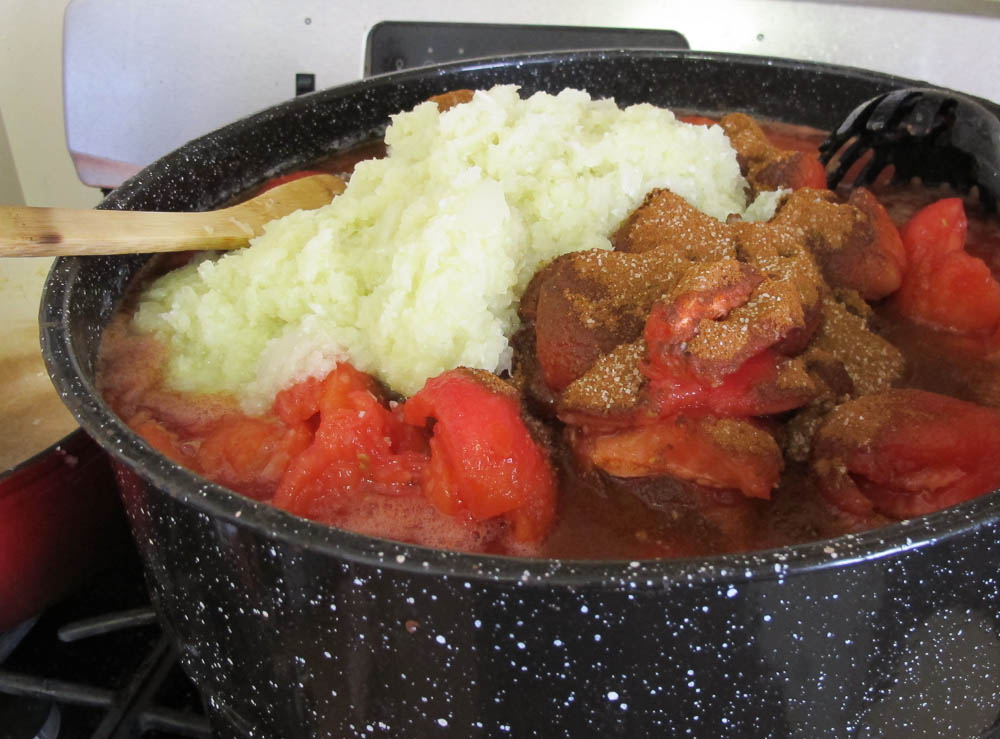
We let everything mingle on a low boil, then used an immersion blender to puree it right in the pot. (Doesn’t it look like a witch’s cauldron? I felt like a witch stirring it, too. Making magic in there.)
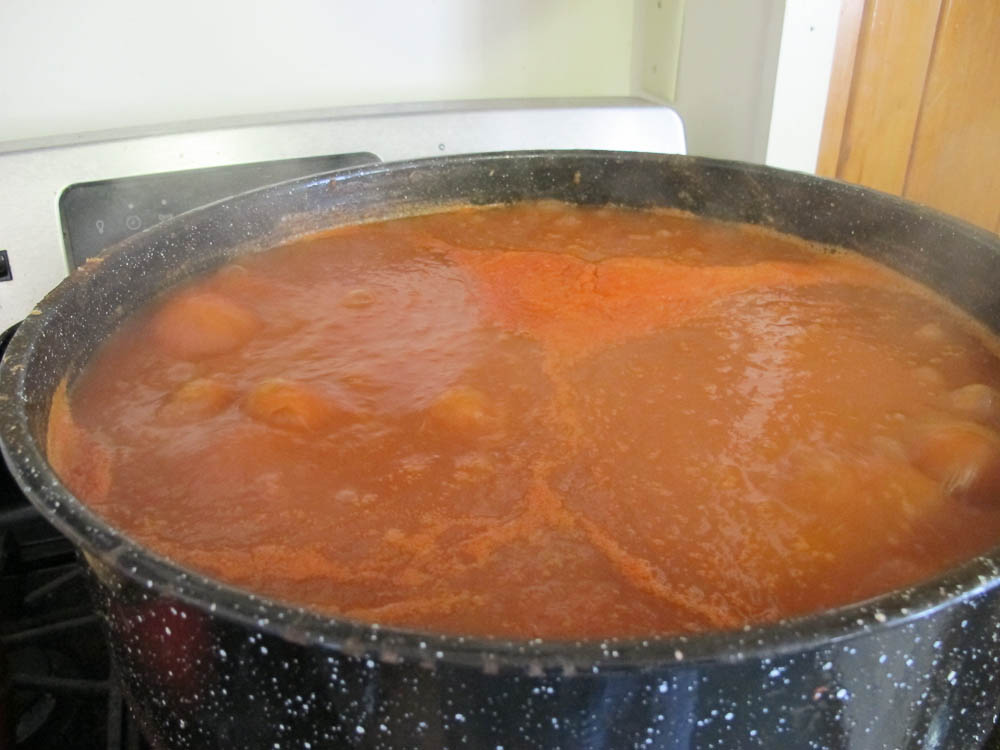
And then simmer, letting the steam evaporate until it reaches ketchup consistency. That sentence felt much too simple; in reality, this portion of the process took hours.
We started processing jars in a water bath canner at about 7pm. Lo and behold, we filled the expected 28 half pint jars and had tons of ketchup left over. I used every last half pint jar in my house, and even had to raid my pantry and closet to find just enough to finish the job. We were positively floored when Molly counted at the end, and we ended up with more than double our expected output—57 half pints—at the end of the day. I can think of no explanation, because the projected yield has always been accurate in the past. I have wracked my brain, and double-checked all the numbers.
I am forced to conclude we witnessed a miracle.
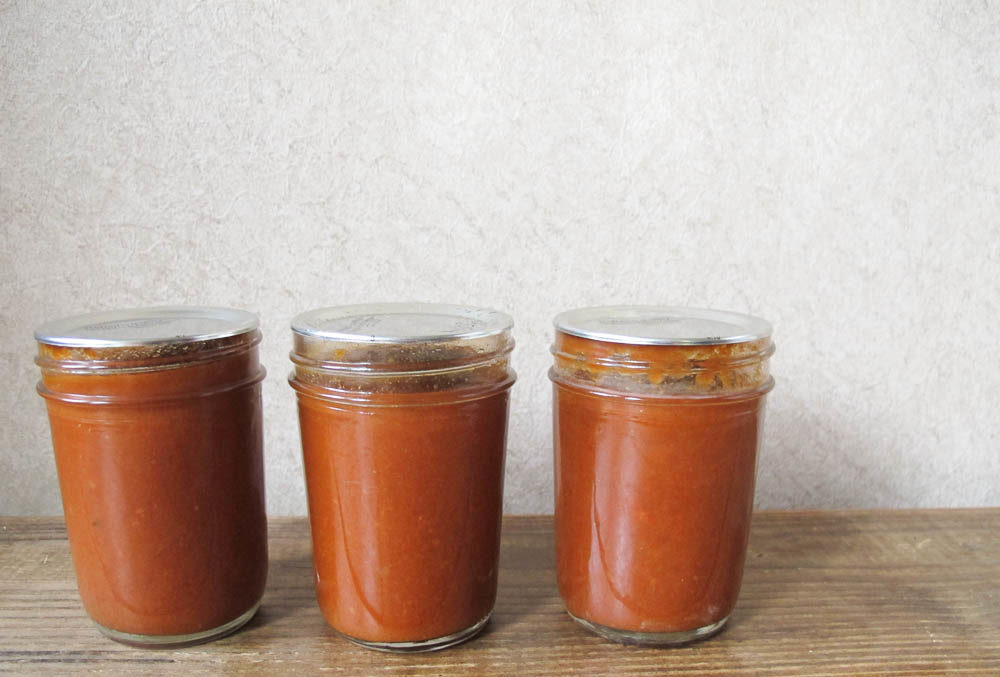
For those of you who do not can, or who choose not to sacrifice a day of your summer to make mass quantities of ketchup, here is a recipe for a single serving of homemade ketchup using tomato puree as a base (which saves the labor of peeling, seeding, pureeing and reducing the tomatoes—a.k.a. LOTS of time).